|
5/28/2024 12 songs by Tristen Bryant12 songs by tristen bryant
1. A song you’ve been listening to a lot lately
Fontaines D.C. - Starburster 2. A song by an artist you’ve seen live Mitski - Bug Like an Angel 3. A song by an artist who shares your zodiac sign John Mayer - Stop This Train 4. A song that breaks your heart Radiohead - How to Disappear Completely 5. A song that makes you want to dance Jamiroquai - When You Gonna Learn? 6. A song from 18 year old you Jonathan Bree - You're so Cool 7. A song you listen to for comfort Ben Howard - Old Pine 8. A song that would be your wrestling theme Jid feat. EARTHGANG - Can't Punk Me 9. A song by your music crush Phoebe Bridgers - Funeral 10. A song that reminds you of a parent R.E.M. - Losing My Religion 11. A song that feels like summer Red Hot Chili Peppers - Road Trippin' 12. A song you will play on the jukebox when you die if you’re only allowed one death's dynamic shroud - INFINITE CIGARETTE spotify
5/24/2024 12 songs by Emily Backus
Hey world wide web angels,
We love music and summer is for mixtapes so we made a "getting to know you" playlist challenge with prompts for each song called 12 SONGS and sent it to friends to get to know them better. Make your own if you feel like it!
If you make one send it to us at [email protected] if you want, include an informal pic and bio and we might feature it on the blog through out the summer.
Here is the first playlist by Emily Backus who is a kickass musician herself (go and listen to MOM FRIEND!): 12 songs by emily backus
1. A song you’ve been listening to a lot lately
Chappell Roan - Good Luck Babe 2. A song by an artist you’ve seen live Sara Watkins - You and Me 3. A song by an artist who shares your zodiac sign Dolly Parton - God Won’t Get You 4. A song that breaks your heart Hurray for the Riff Raff - Pa’lante 5. A song that makes you want to dance Remi Wolf - Cinderella 6. A song from 18 year old you KT Tunstall - Heal Over 7. A song you listen to for comfort Ella Fitzgerald - Bewitched, Bothered, and Bewildered 8. A song that would be your wrestling theme Gretchen Wilson - Redneck Woman 9. A song by your music crush The Breeders - Wait In The car 10. A song that reminds you of a parent Billy Joel - Only The Good Die Young 11. A song that feels like summer Doris Day - Everybody Loves A Lover 12. A song you will play on the jukebox when you die if you’re only allowed one Doris Troy - Just One Look spotify:
|
|||||||||||||||||||||||||||||||||
|
Emily Backus is a teacher and musician in Atlanta, GA, whose projects include pop-rock outfit Mom Friend and country trio Wild Angels. She is learning how to juggle. She has an opinionated and well-read cat named Neko and a dog named Shirley who is scared of everything but also wants to be friends with everyone.
|
That being said, these poems span about a decade of writing, rewriting, and editing. It's hard to tell which poem was the first completed because I spent years going back to them and making both major and minor changes to them. "Of Famine Roads" was probably the earliest started as it was based off of notes I took while I was in Ireland and inspired by the poem "The Famine Road" by Eavan Boland. The last one I completed was "South Philly Casualty," which is about the murder of my great grandmother in 1980 and inspired by the Seamus Heaney poem about the Troubles called "Casualty."
In an earlier promo Becky talks about having missed her father’s funeral. Back in December, I missed my father’s funeral too, or I watched it on YouTube a week after it happened. As his health declined, then got better, and declined again through the second half of 2023, I started watching WWE for the first time since I was a kid. A friend got me into it by recommending the documentary American Nightmare: Becoming Cody Rhodes. A big part of Cody’s story is that his father, wrestling icon Dusty Rhodes, “The American Dream”, never won the WWF championship. In 1977 he faced “Superstar” Billy Graham (not the evangelist) in Madison Square Garden for the title and won, but by ring-out, which meant that the belt didn’t change hands. That was as close as he would ever get. Cody has been chasing the title for himself but also for his father. Dusty died in 2015. For both Cody and Becky, losing their father has been weaved into their character storylines. Both are challenging for titles this weekend.
As a kid, I loved The Undertaker and Bret Hart, which feels fitting for a gemini. The dark and the hot pink. I loved the colorful American spectacle that seemed bigger than life. I remember watching recorded WrestleManias at a friend’s house, compelled by it while for my friends it was more something to have on in the background. I remember wearing an Undertaker and Bret Hart shirts and feeling cool even if I probably wasn’t. Playing the video games. At some point, the interest faded in favor of other interests. Or because I lost access. Or because I internalized views about pro wrestling not being serious, not a "real" sport, something you grow out of.
I’ve always been a sports fan: playing and watching. Mainly football (soccer) but I will get into anything. I love the World Cup and the Olympics. I will invest in curling and ping pong. Cross country skiing is riveting, guys! Growing up in Sweden, hockey was huge. Me and my friends collected hockey cards and pretended to be our favorite NHL stars, staying out on the ice until we were frozen numb and happy. Sports was also something I bonded with my dad over. Some of our last conversations still concerned what was going on in the world of sports, asking if there were any matches on that day. We followed and talked about the women’s World Cup throughout the summer 2023 as he was going in and out of the hospital. Growing up, we played football, and hockey, or bandy (which is like soccer and hockey mixed), and innebandy (the indoor, skateless version). I was too shy or indecisive to join any teams but throughout high school my dad and I played at a school next to our house on Sundays with a ragtag group of all ages, for fun. We were comparably good and almost identical in physique and style, with a similar appreciation for sports as a place where you can make beautiful things happen: tricks, assists and goals. I loved playing with him, we seemed to share a mind for what we wanted to happen on the field or court.
I’ve always been into the showmanship of sports, the performance and theater of it, the drama of it. In retrospect, I wish I could go back to early 90s me and tell me to stick with wrestling, because it has all of that and more. Yeah it’s overly dramatic, so is sports and that’s ok. Fellas (teenage me), it’s ok to be compelled by drama and invest in stories and gossip, you don’t have to call it something else. Sports is a big soap and professional wrestling knows it. I love following along and the uncertainty, not knowing where we're going or how we're going to get there, moving from heartbreak to roaring joy.
The tedious argument is that professional wrestling isn’t a real sport because it’s predetermined. Fine, but that is such a boring qualifier. I guess you could call it theater, entertainment, but there's also a sport element to it. Wrestlers are incredible and daring athletes. Watch Ricochet fly. Watch Mick Foley and Iyo Sky tumble off a 16 feet steel cage. That it’s predetermined is something I like about it. It becomes collaboration. The way two or more wrestlers choreograph themselves into a dance, flying off ropes, and catching each other. It’s beautiful. The care that they take in guiding and protecting each other through a match, if they’re any good. The way they sell it. It’s a collaboration where if they put on a strong match, both actually win. I find that moving. I’m also in awe. How are they even doing this for 10-20-30-40 minutes? Several times a week? Not just the physical fight itself, but the collaboration in delivering promos, building a character that you as a fan come to invest in. It’s a soap and also a sense of community. You can sense the community among the wrestlers and it extends to the fans. My instagram right now is 80% WWE. They’re always commenting on each other’s post!
Another point: the freedom of expression in your character. Dressing up. Make up. You can become anyone and then turn and become someone else. Become a heel, and back to face again. The stories are the same and endlessly varied. And as fans we get to live through it. Besides, you get a cool entrance song and people are excited to see you, sometimes. We all need cool entrance music. With technological advancements, why do we still not have cool entrance music? Leos everywhere want to know.
I recently went back and watched the 2018 all women's Evolution event. In the next to last match of the card Charlotte Flair challenges Becky Lynch for the Smackdown women's title in a last woman standing match (you only win if your opponent doesn't get up before the ref counts to 10). It is a grueling fight with a slow build and you can tell both Becky and Charlotte made a deal to give it all they have. They both take a serious beating. Their intensity and commitment is at a 10 from the start. For some reason watching this hit me on a deeper level, that I can’t quite articulate. At one point Charlotte places Becky on a table in the ring and moonsaults from the top rope to land on her. The table doesn't break so she does it again, with a front flip, and this time it does. For a moment both wrestlers lay motionless in an embrace in the middle of the broken table as the camera zooms. It feels like a moment, like care. Later Becky buries Charlotte under chairs until we can no longer see her but on the 9 count Charlotte manages to emerge. The match continues.
Grief is strange. I lost a parent but I also lost a friend, someone to talk to and someone who saw me, knew me. You become untethered from existing in this one way that you’ve known your whole life, since you were a child, existing in the gaze of a parent. Instead you have to figure out how to exist with an absence. Following Raw and Smackdown weekly has been an escape but also a routine, something to hold on to. I don’t know that my dad would get into WWE but I think he could appreciate it. He did box some, growing up. I think he would appreciate Becky's punch.
Superfan: the story of Vladimir
A 30 minute documentary on Peacock about superfan Vladimir. It feels like a good place to start. This is also a story about grief. I dare you to watch this without crying. I dare you!
Wrestlers
Wrestlers on Netflix is a documentary series following the small Ohio Valley Wrestling company, led by Al Snow.
American Nightmare: Becoming Cody Rhodes
American Nightmare will give you a good summary of one of the main stories leading into WrestleMania XL. On Peacock. All these are great documentaries full stop, even if you don't plan on
Cassandro
This 2023 movie with Gael Garcia Bernal as luchador Cassandro was so slept on. It's great. On prime.
Dark side of the ring
On hulu. These stories from the history of professional wrestling are heartbreaking and informative. Watch one and then take a break and watch another.
Steve Austin: Broken Skull Sessions
I’ve been enjoying these long interviews where Stone Cold talks to current and former wrestlers. Also on peacock.
To get ready for WrestleMania I would watch the WrestleMania kickoff show from February 8th, on YouTube, which is cinema. And follow that story through the last couple Raw and Smackdown episodes.
Happy WrestleMania!
| Kim Göransson lives in Southwest VA. They like to bake and make pasta and get lost in nature. They like tinned fish and brie and sad movies and wrestling. Sometimes they take photographs, write, make art and music. Web editor for Meow Meow Pow Pow Lit. Shinsuke Nakamura fan. You can find them @sonofgore on Instagram. |
1/1/2024
The 2023 Mix by Bex
This year’s mix also has a hidden track, but since Spotify hasn’t caught up with the advanced technologies of late-aughts burned CDs and handwritten tracklists, I can’t hide it in the app. I left it off this mock CD sleeve for old time’s sake, though!
I hope something on here brings delight, comfort, or whatever you might need.
xo
b
|
Becca Klaver is the author of the poetry collections LA Liminal (Kore Press), Empire Wasted (Bloof Books), and Ready for the World (Black Lawrence Press), as well as several chapbooks. Her poems have appeared in The American Poetry Review, Fence, jubilat, Verse Daily, and in the Academy of American Poets Poem-a-Day series. Midwinter Constellation, a book co-written with 31 other poets in homage to Bernadette Mayer’s Midwinter Day, was published in 2022 by Black Lawrence. As an editor, she co-founded Switchback Books, is currently co-editing the anthology Electric Gurlesque (Saturnalia Books), and has created pop-up projects such as Women Poets Wearing Sweatpants. She has taught at colleges and universities around the U.S., and is currently the Program Manager for the Iowa Summer Writing Festival. You can find more at beccaklaver . com
|
12/18/2023
Adele Nwankwo
| adele_nwankwo.pdf | |
| File Size: | 22587 kb |
| File Type: | |
12/18/2023
Tyler King
| heartbreak_kid.pdf | |
| File Size: | 520 kb |
| File Type: | |
| von_erich.pdf | |
| File Size: | 619 kb |
| File Type: | |
12/17/2023
Zoë Graber
| Zoë Graber (she/they) is a 16-year-old Capricorn from Richmond, Virginia. They own a Depop business where they sell clothes and handmade jewelry. They enjoy thrifting, journaling/scrapbooking, music, poetry and so much more. Z is a huge advocate for human rights and a proud member of the (l)gbtq+ community. They are currently published in The Howl Magazine and Exit Notes - Poet's Choice. |
12/14/2023
Al Russell
For JR
The desert lizard has risen
running like a scalded dog
amazing flexibility and power in the legs
barreling toward the end of the road
that leads off the edge of the world.
The paw, the talon, the heel of the hand
of the man, of the bear, of the desert lizard
connects with the skull of the root of the night
of the word that found its mark in your throat.
Horsemen launch into the canyon where the water smells
like sediment, algae, and the color clear.
| Al Russell is a pansexual nonbinary tankie North Carolinian former educator parent dog lover who reads too many books, watches too many movies, and smokes too many cigs. Previous collections (available from Vegetarian Alcoholic Press) are titled Children of the Anxious City and Lookinglasshouse. IG @allenalanallan |
12/14/2023
Jack Bordnick
| My sculptures and photography incorporate surrealistic, mythological and magical imagery often with whimsical overtones — aimed at provoking our experiences and self reflections. Aiming to unbalance our rational minds, the predominant imagery deals mostly with facial expressions of both living and “non-living” beings, and things that speak to us in their own languages. They are mixed media assemblages that have been assembled, disassembled and reassembled, becoming abstractions unto themselves. I am an Industrial design graduate of Pratt Institute in New York. I have been a designer and design director for the past twenty years including for numerous company, corporate and government projects. They included a children's museum, for the city of New York and the Board of Education, involved in all aspects of marketing and design. |
Author
Our fabulous blog team
Archives
June 2024
May 2024
April 2024
January 2024
December 2023
November 2023
October 2023
June 2023
May 2023
March 2023
February 2023
January 2023
December 2022
November 2022
October 2022
September 2022
August 2022
July 2022
June 2022
May 2022
April 2022
March 2022
February 2022
January 2022
November 2021
September 2021
June 2021
May 2021
April 2021
March 2021
February 2021
January 2021
December 2020
November 2020
October 2020
September 2020
June 2020
March 2020
February 2020
January 2020
December 2019
September 2019
July 2019
June 2019
May 2019
April 2019
March 2019
February 2019
January 2019
December 2018
November 2018
October 2018
September 2018
August 2018
June 2018
May 2018
April 2018
March 2018
February 2018
January 2018
December 2017
November 2017
October 2017
September 2017
Categories
All 12 Songs Art Art And Athletes Book Review Chorus Blog Date This Book Game Of Narratives Guest Blog Letter From The Editor Lifehacks Movies Of 2019 Music Pup Sounds Smackdown Strive For 55 Summer Playlists











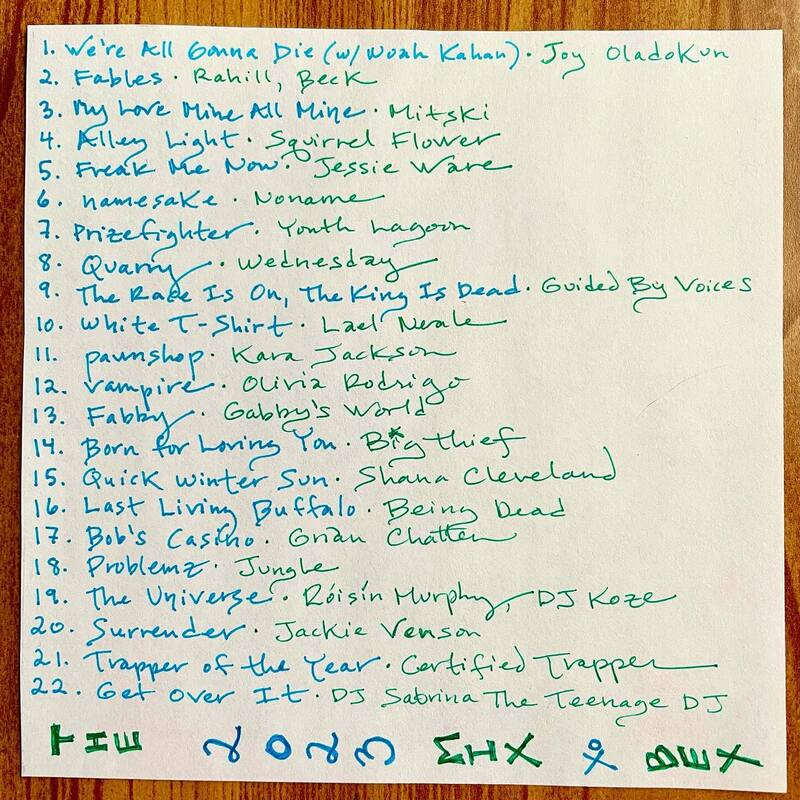

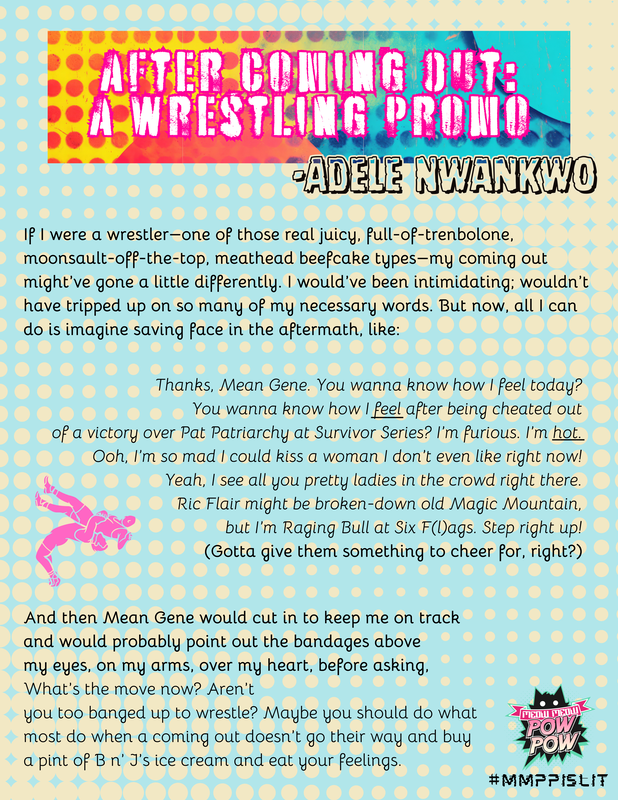
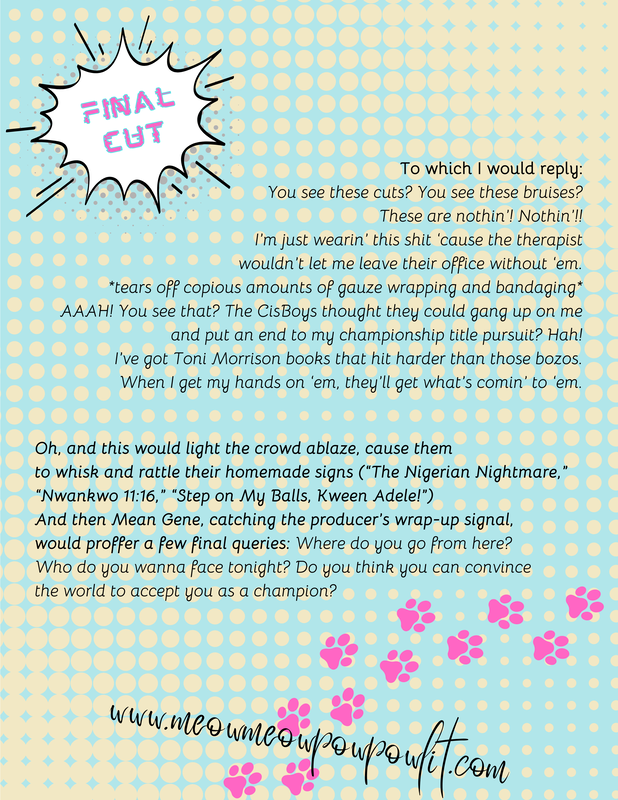
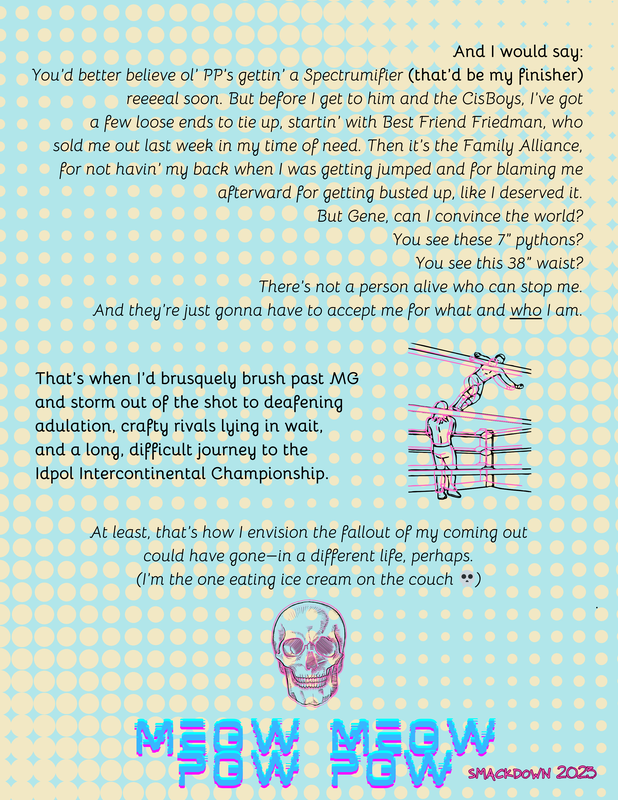
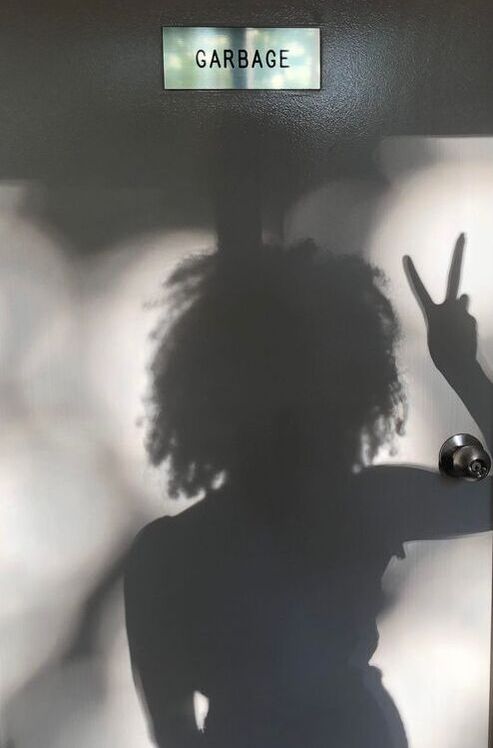
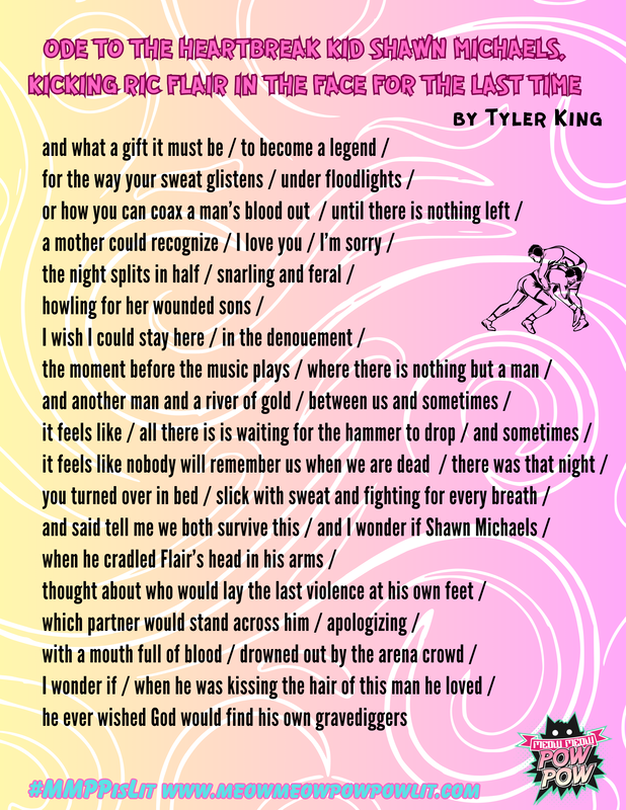
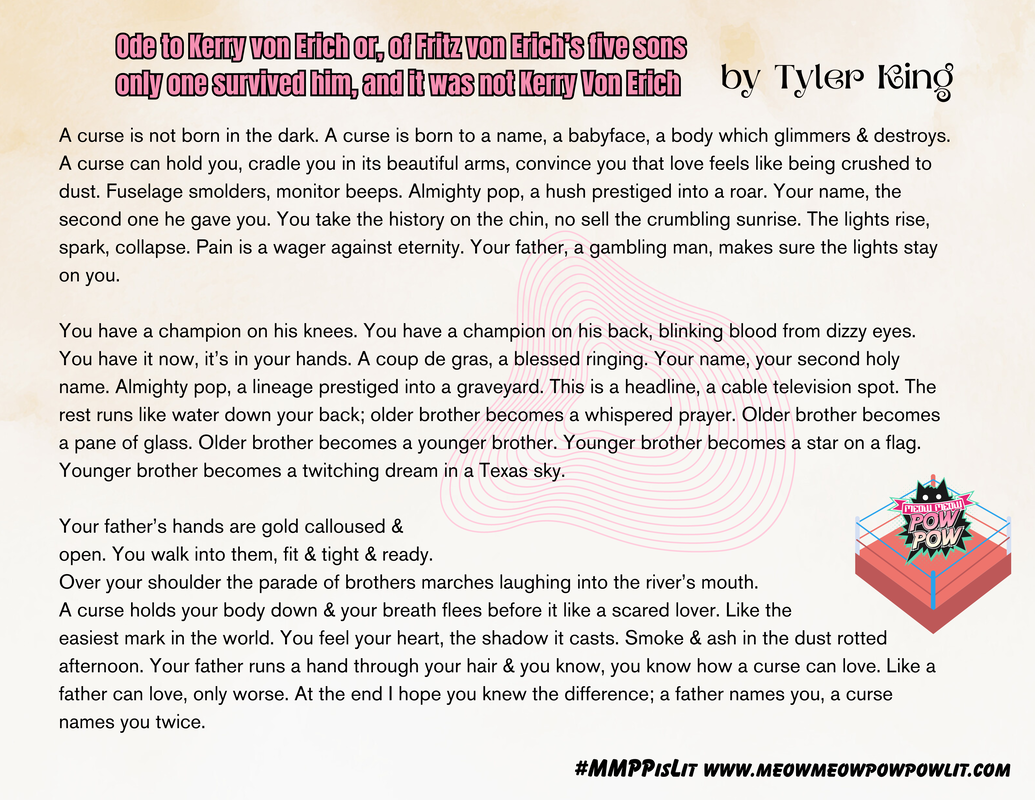






 RSS Feed
RSS Feed